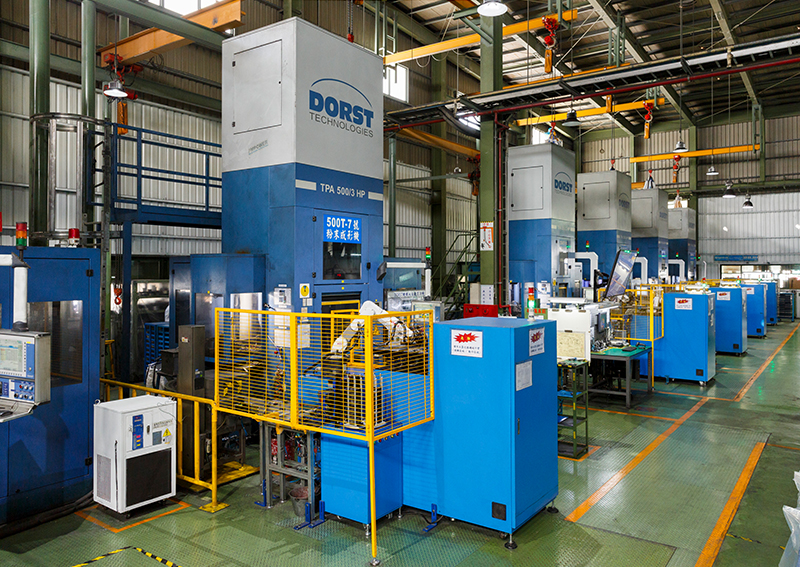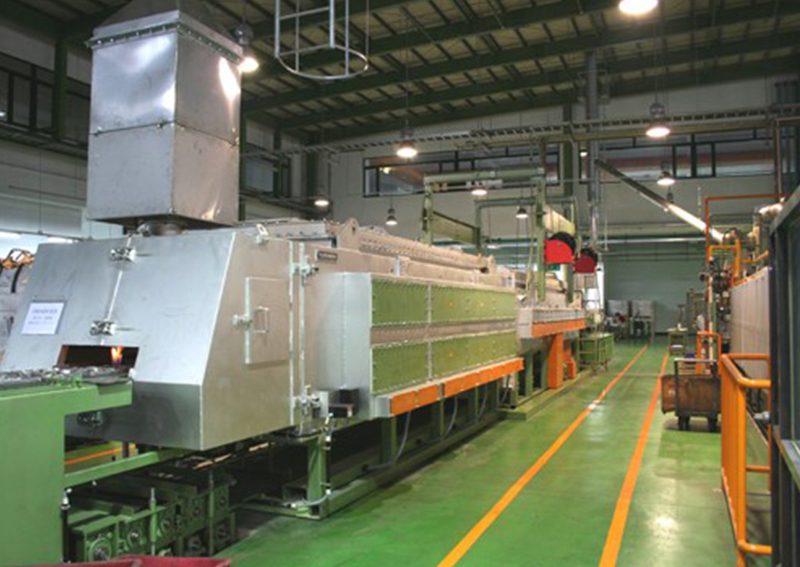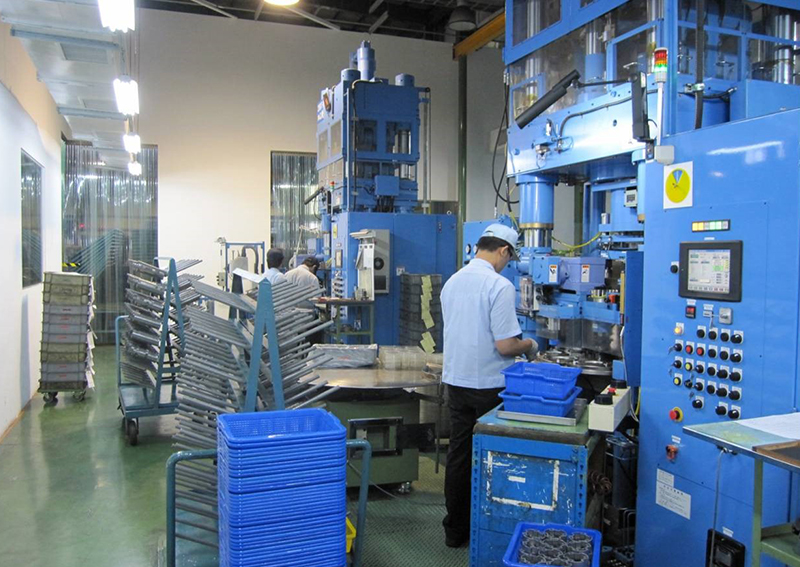
Powder Metallurgy (PM) is one of the many metal manufacturing techniques that primarily uses metal alloy powder as raw material, which is then pressed and sintered into the final product. Powder metallurgy is particularly suitable for producing high-performance, high-precision parts.
Raw Material Sourcing
Stable and abundant metal raw materials are the foundation of the powder metallurgy process. Porite Taiwan primarily uses raw materials from major global suppliers in Sweden and the United States, as well as some specially formulated materials developed in-house, to maintain high quality and precision in products.
Powder Mixing
In addition to purchasing pre-mixed alloy powders, Porite Taiwan has established powder mixing lines to blend different types of metal powders. Lubricants and additives are added according to customer requirements to improve compressibility and sintering performance, ensuring the material characteristics meet customer product needs.
Compaction
Compaction is the process of pressing metal powder into the desired shape using customized tooling and applying pressure through compaction machines. Porite Taiwan's compaction machines, mainly imported from Germany and Japan, range from small 5T machines suitable for bearings to medium and large 200T-800T machines for producing large automotive parts, and even the largest 1600T compaction machine in Asia.

Sintering
Sintering is the process of densifying the formed parts at high temperatures. During sintering, powder particles diffuse and bond, forming a solid structure. The sintering temperature is usually below the metal's melting point but high enough to allow atomic movement and strong bonding between powder particles. Porite Taiwan currently operates 54 continuous sintering furnaces.

Post-Processing
Depending on product requirements, Porite Taiwan performs various post-processing steps:

Using machining tools or CNC machines for cutting, grinding, and achieving precise dimensions and surface finish.
Includes processes like tempering, quenching, and induction heating to improve the strength and hardness of parts.
Methods like oil impregnation or electroplating to enhance rust resistance or provide other special functions.
This site uses cookies to improve your browsing experience. we’ll assume you’re OK to continue. If you want to read more about this, please click PRIVACY, thank you.